When an industrial HVAC system fails in a 200,000-square-foot warehouse or manufacturing plant, it’s not just uncomfortableit’s a business crisis. Production halts, sensitive equipment overheats, employee safety becomes compromised, and every hour of downtime translates to thousands of dollars in lost revenue. Unlike residential systems that serve a handful of occupants, industrial HVAC systems are the lifeline of large facilities, managing air quality, temperature control, and ventilation for complex operations that can’t afford interruptions.
Industrial HVAC repair demands a different caliber of expertise, equipment, and response time than standard commercial or residential service. These systems operate at massive scales, often running 24/7 under demanding conditions, and when they break down, you need technicians who understand the unique challenges of large-facility climate control. At 75 Degree AC, we’ve spent years diagnosing and repairing industrial HVAC systems across Houston’s manufacturing sector, distribution centers, and large commercial facilities, delivering the rapid, reliable solutions that keep operations running.
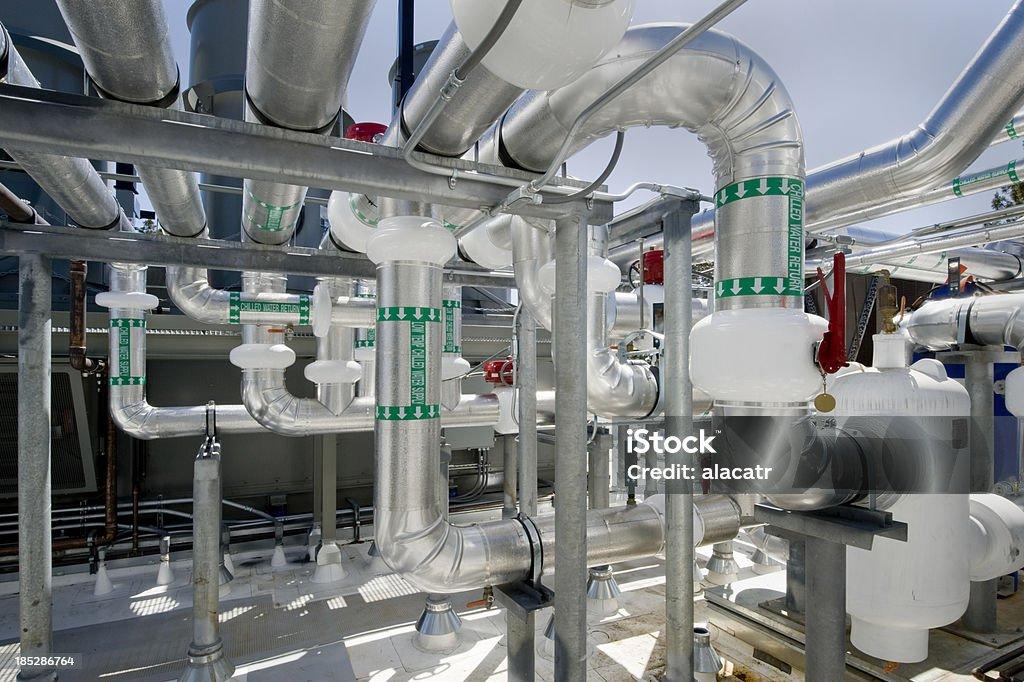
Understanding Industrial HVAC Systems: More Than Just Cooling
Industrial HVAC systems differ fundamentally from residential and even commercial systems in scale, complexity, and performance requirements. These aren’t oversized versions of home air conditionersthey’re engineered solutions designed to handle specific industrial challenges.
Key Components of Industrial HVAC Systems
Industrial climate control relies on integrated components working in concert to manage vast interior spaces. Rooftop units (RTUs) ranging from 10 to 100+ tons provide the primary cooling and heating capacity. Variable air volume (VAV) systems adjust airflow based on occupancy and production demands, while makeup air units replace exhausted air to maintain proper building pressurization.
Chiller systems using water or glycol loops distribute cooling across multiple zones, often spanning several buildings. Energy recovery ventilators (ERVs) capture waste heat to improve efficiency, and sophisticated building automation systems (BAS) monitor and control every aspect of climate performance. According to the U.S. Department of Energy, industrial facilities account for approximately 32% of total commercial building energy consumption, making system efficiency critical for operational costs.
Unique Demands of Large Facilities
Large facilities present challenges that residential and small commercial systems never encounter. Manufacturing plants generate tremendous heat loads from machinery, requiring precision cooling to prevent equipment failure. Warehouses demand consistent temperature control across 20-foot-high spaces with varying occupancy levels. Food processing facilities must maintain strict FDA temperature requirements, while pharmaceutical operations need precise humidity control for product integrity.
These systems typically operate continuously, accumulating exponentially more wear than residential units. A manufacturing plant’s HVAC system might run 8,760 hours annually compared to 2,000-3,000 hours for a typical home system. This intensive operation makes preventive maintenance and rapid repair response absolutely essential.
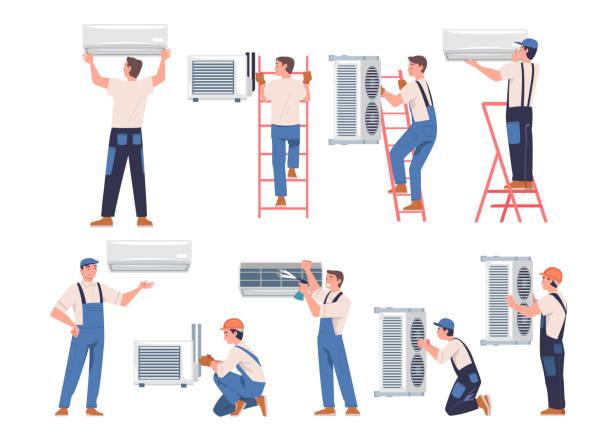
Common Industrial HVAC Problems and Warning Signs
Industrial HVAC failures rarely happen without warning. Recognizing early indicators can prevent catastrophic breakdowns and minimize downtime.
Mechanical Failures and Component Wear
Compressor failure ranks as the most expensive industrial HVAC repair, with replacement costs ranging from $3,000 to $15,000 depending on system size. Compressors fail due to refrigerant leaks, electrical issues, or contamination from inadequate maintenance. Bearing failures in large blower motors create characteristic grinding noises weeks before complete failure.
Belt-driven systems experience regular wear, with belts typically requiring replacement every 12-18 months under continuous operation. A single broken belt in a critical air handling unit can shut down an entire production line. Evaporator and condenser coils accumulate dirt, reducing efficiency by 5-15% annually if not cleaned. In Houston’s humid climate, corrosion accelerates on outdoor equipment, particularly on older systems lacking proper protective coatings.
Control System and Sensor Malfunctions
Modern industrial HVAC relies heavily on electronic controls and sensors. Thermostat calibration drift causes temperature swings that affect product quality and employee comfort. Pressure sensors provide critical data for system diagnosticswhen they fail, technicians lose visibility into refrigerant charge and airflow issues.
Building automation system glitches can create phantom problems that appear as mechanical failures but actually stem from programming errors or network communication issues. Distinguishing between control problems and mechanical failures requires specialized diagnostic expertise that general HVAC repair technicians may lack.
Airflow and Ventilation Issues
Inadequate airflow ranks among the most common yet overlooked industrial HVAC problems. Clogged filters restrict airflow, forcing systems to work harder and consume more energy. The American Society of Heating, Refrigerating and Air-Conditioning Engineers (ASHRAE) reports that dirty filters can increase energy consumption by 15% while reducing cooling capacity by 10%.
Ductwork leaks in large facilities waste conditioned air and create pressure imbalances. A 10% duct leak translates to 10% wasted energysignificant when your monthly utility bill exceeds $50,000. Damper failures prevent proper zone control, resulting in some areas being too hot while others freeze.
Strategic Solutions for Industrial HVAC Repair
Effective industrial HVAC repair requires a methodical approach that minimizes downtime while ensuring long-term reliability.
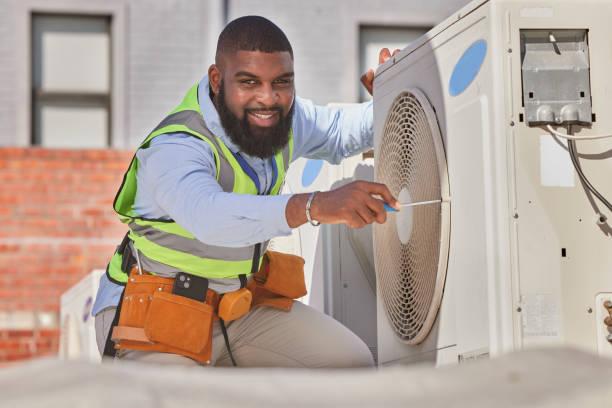
Emergency Response and Rapid Diagnostics
When an industrial system fails, response time determines financial impact. Our commercial HVAC repair team maintains a 24/7 emergency response capability with technicians who arrive with comprehensive diagnostic equipment. Thermal imaging cameras identify hot spots and refrigerant leaks invisible to the naked eye. Digital manometers measure airflow and static pressure across system components.
Refrigerant analyzers determine exact charge levels and detect contamination. Electrical testing equipment identifies failing capacitors, contactors, and motor windings before they cause complete failure. This diagnostic-first approach prevents misdiagnosis and unnecessary part replacementsaving time and money.
Component Replacement vs. System Retrofit
Industrial HVAC repair often presents a critical decision: repair existing equipment or invest in system upgrades. Component replacement makes sense when the system is less than 15 years old, operates efficiently, and the failed part represents less than 30% of replacement cost. However, repeatedly repairing aging equipment with obsolete parts can exceed replacement costs over 2-3 years.
| Repair Scenario | Recommended Action | Typical Cost Range |
|---|---|---|
| Minor component failure (belt, filter, sensor) | Immediate repair | $200 – $1,500 |
| Compressor failure (system under 10 years) | Replace compressor | $3,000 – $8,000 |
| Multiple component failures (system 15+ years) | Consider full replacement | $25,000 – $150,000+ |
| Efficiency decline over 25% | Retrofit with high-efficiency components | $10,000 – $50,000 |
| Control system obsolescence | Upgrade to modern BAS | $15,000 – $75,000 |
System retrofits offer a middle ground, replacing critical components like compressors, controls, or heat exchangers while retaining functional infrastructure. Variable frequency drives (VFDs) on large motors can reduce energy consumption by 20-40% while extending equipment life. Upgrading to programmable building automation provides real-time monitoring and predictive maintenance capabilities that prevent future failures.
Minimizing Production Downtime
Large facilities can’t afford extended shutdowns for repairs. Strategic repair planning involves several techniques to keep operations running. Temporary rental equipment provides immediate cooling while permanent repairs proceed. Modular HVAC systems allow technicians to isolate and repair individual zones without affecting the entire facility.
After-hours repair scheduling accommodates critical maintenance during off-shifts or weekends. Some repairs can be staged across multiple service visits, addressing the most urgent issues first while scheduling less critical work during planned downtime. Our experience with Houston’s industrial sector has taught us that coordination with production schedules isn’t optionalit’s fundamental to effective service delivery.
Selecting the Right Industrial HVAC Repair Partner
Not every HVAC company possesses the capabilities, experience, or resources to handle large-facility repairs effectively.
Essential Qualifications and Certifications
Industrial HVAC technicians should hold EPA 608 Universal Certification for refrigerant handling, demonstrating proficiency with all refrigerant types. North American Technician Excellence (NATE) certification indicates advanced technical knowledge and troubleshooting skills. Manufacturer-specific training matters tremendouslyTrane, Carrier, York, and Daikin systems each have unique characteristics requiring specialized knowledge.
Licensed contractors must carry adequate insurance coverage for industrial work. General liability insurance protects against property damage, while workers’ compensation covers technician injuries on your facility. Professional liability insurance protects both parties if system failures occur due to service errors. Request current certificates of insurance before allowing any contractor on-site.
Response Time and Service Guarantees
Emergency response time directly impacts your bottom line. A quality industrial HVAC repair company should guarantee response within 2-4 hours for critical failures. Same-day service availability ensures minor issues get addressed before becoming major problems. After-hours and weekend availability isn’t a luxury for industrial facilitiesit’s a necessity.
Service guarantees demonstrate confidence in workmanship. Look for companies offering minimum 90-day warranties on labor and honoring full manufacturer warranties on replacement parts. Performance guarantees that commit to specific temperature or humidity targets within defined timeframes provide additional accountability. At 75 Degree AC, we back every industrial repair with comprehensive warranties because we stand behind our work.
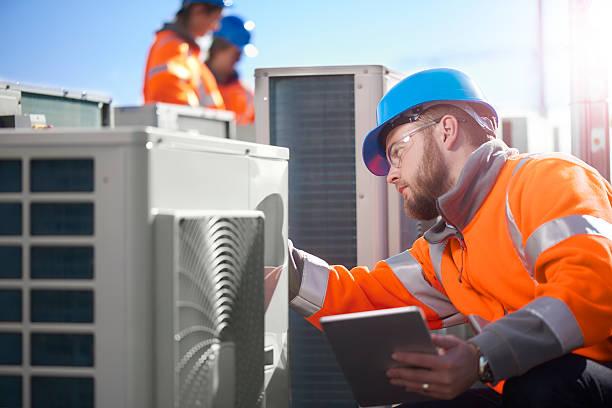
Proactive Maintenance Programs
The best industrial HVAC repair is the one you never need. Preventive maintenance programs dramatically reduce emergency repairs while extending equipment life. Regular quarterly inspections catch minor issues before they escalate. Filter changes on defined schedules maintain airflow and efficiency. Annual refrigerant checks prevent slow leaks that damage compressors.
Comprehensive maintenance agreements typically include:
- Quarterly system inspections covering electrical connections, refrigerant levels, and mechanical components
- Filter replacement based on actual conditions rather than arbitrary timeframes
- Coil cleaning to maintain heat transfer efficiency and prevent biological growth
- Lubrication of motors, bearings, and mechanical linkages per manufacturer specifications
- Belt tension adjustment and replacement before failure occurs
- Thermostat calibration ensuring accurate temperature control
- Control system testing verifying proper operation of safety switches and operating sequences
- Priority emergency service with reduced rates for plan members
The U.S. Department of Energy estimates that proper maintenance can reduce energy consumption by 5-15% while preventing 95% of equipment failures. For a facility with $60,000 monthly utility costs, that’s $3,000-$9,000 annual savingseasily covering maintenance program costs.
Energy Efficiency and Cost Optimization
Industrial HVAC systems represent one of the largest controllable expenses in facility operations. Strategic optimization reduces costs without compromising performance.
Identifying Energy Waste
Professional energy audits reveal hidden efficiency losses. Infrared thermal imaging identifies insulation gaps and air leaks in ductwork. Airflow testing confirms proper ventilation rates without over-ventilation that wastes energy. Power monitoring equipment measures actual consumption patterns, identifying equipment that runs unnecessarily or operates inefficiently.
Simple improvements often yield dramatic results. Economizer repairs allow systems to use outside air for cooling during mild weather, reducing compressor runtime by 20-30% during Houston’s brief spring and fall seasons. Variable speed drive installation on constant-speed motors adapts output to actual demand rather than running full-speed continuously. LED lighting retrofits in mechanical rooms reduce heat loads that HVAC systems must offset.
Upgrade Opportunities During Repair
Every repair presents an opportunity for efficiency improvement. When replacing failed compressors, consider high-efficiency models that use 15-25% less energy. Upgrading to smart thermostats during control system repairs provides advanced scheduling and remote monitoring capabilities. Replacing standard motors with premium-efficiency models during bearing repairs pays for itself through reduced energy consumption.
Federal tax incentives through the Inflation Reduction Act provide credits up to 30% for qualifying HVAC efficiency improvements. Combined with utility rebate programs, upgrade costs can be substantially offset while delivering immediate operational savings.
Industry-Specific HVAC Considerations
Different industrial sectors face unique HVAC challenges requiring specialized solutions.
Manufacturing and Production Facilities
Manufacturing environments generate substantial process heat requiring heavy-duty cooling systems. Metal fabrication shops need dust and particle filtration to protect HVAC components from contamination. Chemical processing facilities require corrosion-resistant materials and explosion-proof electrical components in hazardous areas. Our experience with Houston’s diverse manufacturing sector has exposed us to virtually every industrial HVAC challenge imaginable.
Warehousing and Distribution Centers
Warehouse HVAC must manage massive open spaces with high ceilings and varying occupancy levels. Dock doors constantly opening create massive infiltration loads requiring properly sized makeup air systems. Temperature-controlled storage areas demand precision climate control with backup systems to protect inventory. Destratification fans reduce ceiling-to-floor temperature differentials, improving comfort while reducing heating costs.
Food Processing and Cold Storage
Food facilities operate under strict FDA and USDA regulations requiring precise temperature and humidity control. Cold storage rooms need redundant refrigeration with alarm systems alerting to temperature excursions. Process areas require positive pressurization to prevent contamination. Sanitary design standards mandate stainless steel construction and sealed electrical components in washdown areas.
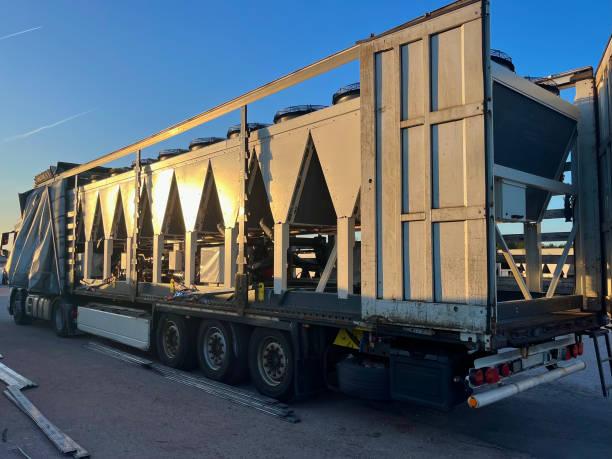
Why Houston Facilities Choose 75 Degree AC for Industrial HVAC Repair
Since 2016, 75 Degree AC has built a reputation as Houston’s trusted partner for industrial HVAC repair. Our technicians bring extensive experience with large-scale systems across manufacturing, warehousing, and commercial facilities throughout the Houston area.
We understand that your operation can’t stop for HVAC problems. That’s why we maintain 24/7 emergency service capability with fully-equipped service vehicles ready to respond. Our diagnostic-first approach identifies root causes rather than treating symptoms, preventing recurring failures that waste your time and money. Upfront pricing with no hidden fees means you know exactly what repairs will cost before work begins.
Our comprehensive service portfolio covers everything from emergency repairs to complete commercial HVAC installation and preventive maintenance programs. Whether you need immediate repair, system upgrades, or ongoing maintenance support, one call to (713) 598-2737 connects you with Houston’s industrial HVAC experts.
Conclusion: Protecting Your Facility Investment
Industrial HVAC systems represent substantial capital investments critical to facility operations. Proper maintenance and timely repair protect that investment while ensuring uninterrupted production, comfortable working conditions, and optimized energy costs. The complexity of large-facility climate control demands technicians with specialized training, diagnostic equipment, and extensive experiencenot general contractors attempting to scale residential skills to industrial applications.
By partnering with qualified industrial HVAC professionals, implementing proactive maintenance programs, and addressing issues at the first warning signs, facility managers can prevent costly emergency repairs while extending equipment life by years. The key is finding a service provider who understands the unique demands of large facilities and possesses the resources to deliver comprehensive solutions.
Don’t wait for system failure to find out your HVAC contractor isn’t equipped for industrial repair. Contact 75 Degree AC today at (713) 598-2737 for a comprehensive facility assessment and customized maintenance program. Our Houston-based team is ready to become your long-term partner in industrial climate control, delivering the reliability and expertise your operation demands. Visit our service page to learn more about our commercial and industrial HVAC solutions.
Frequently Asked Questions About Industrial HVAC Repair
How often should industrial HVAC systems be serviced?
Industrial HVAC systems operating continuously should receive quarterly preventive maintenance inspections at minimum. High-demand environments like manufacturing plants may benefit from monthly inspections of critical components. Filter changes typically occur monthly or bimonthly depending on environmental conditions, while comprehensive annual maintenance should include coil cleaning, refrigerant checks, and control system calibration. The specific maintenance schedule depends on system age, operating hours, and environmental factors.
What causes most industrial HVAC failures?
Inadequate maintenance causes approximately 80% of industrial HVAC failures according to ASHRAE research. Dirty filters restrict airflow, forcing components to work harder and fail prematurely. Refrigerant leaks slowly degrade system performance until compressors fail from improper charging. Electrical connection corrosion creates resistance that damages motors and controls. Regular preventive maintenance catches these issues before they cause complete system failure.
How much does industrial HVAC repair typically cost?
Industrial HVAC repair costs vary dramatically based on system size and failure type. Minor repairs like belt replacement or filter changes range from $200-$800. Component replacements like motors or control boards cost $1,000-$5,000. Major repairs involving compressor replacement range from $3,000-$15,000. Complete system replacement for large facilities can exceed $100,000. Emergency service typically includes premium charges of 50-100% over standard rates. Preventive maintenance contracts cost substantially less than emergency repairs while preventing most failures.
Can industrial HVAC systems be repaired after hours?
Yes, most industrial HVAC contractors offer 24/7 emergency service and can schedule repairs during off-hours to minimize production disruptions. After-hours service typically incurs premium charges but prevents costly downtime during business operations. Some repairs require system shutdown and are best scheduled during planned facility closures or low-production periods. Discussing scheduling flexibility during contractor selection ensures alignment with your operational requirements.
How long do industrial HVAC systems last?
Well-maintained industrial HVAC systems typically last 15-25 years depending on usage intensity and environmental conditions. Systems operating continuously in harsh environments may require replacement closer to 15 years, while systems with lighter usage and excellent maintenance can exceed 25 years. However, advancing efficiency standards often make replacement economically sensible before equipment failure, as new systems can reduce energy costs by 30-50% compared to older models.
What’s the difference between commercial and industrial HVAC repair?
Industrial HVAC repair involves larger capacity systems, more complex controls, and specialized requirements like process cooling or clean room environments. Industrial systems typically operate continuously rather than cycling on and off like commercial systems. Repair technicians need more extensive training on industrial controls, refrigeration principles, and building automation systems. Industrial repairs also require closer coordination with production schedules to minimize operational disruption. While commercial HVAC focuses on occupant comfort, industrial HVAC often supports critical manufacturing processes where precision and reliability are paramount.
